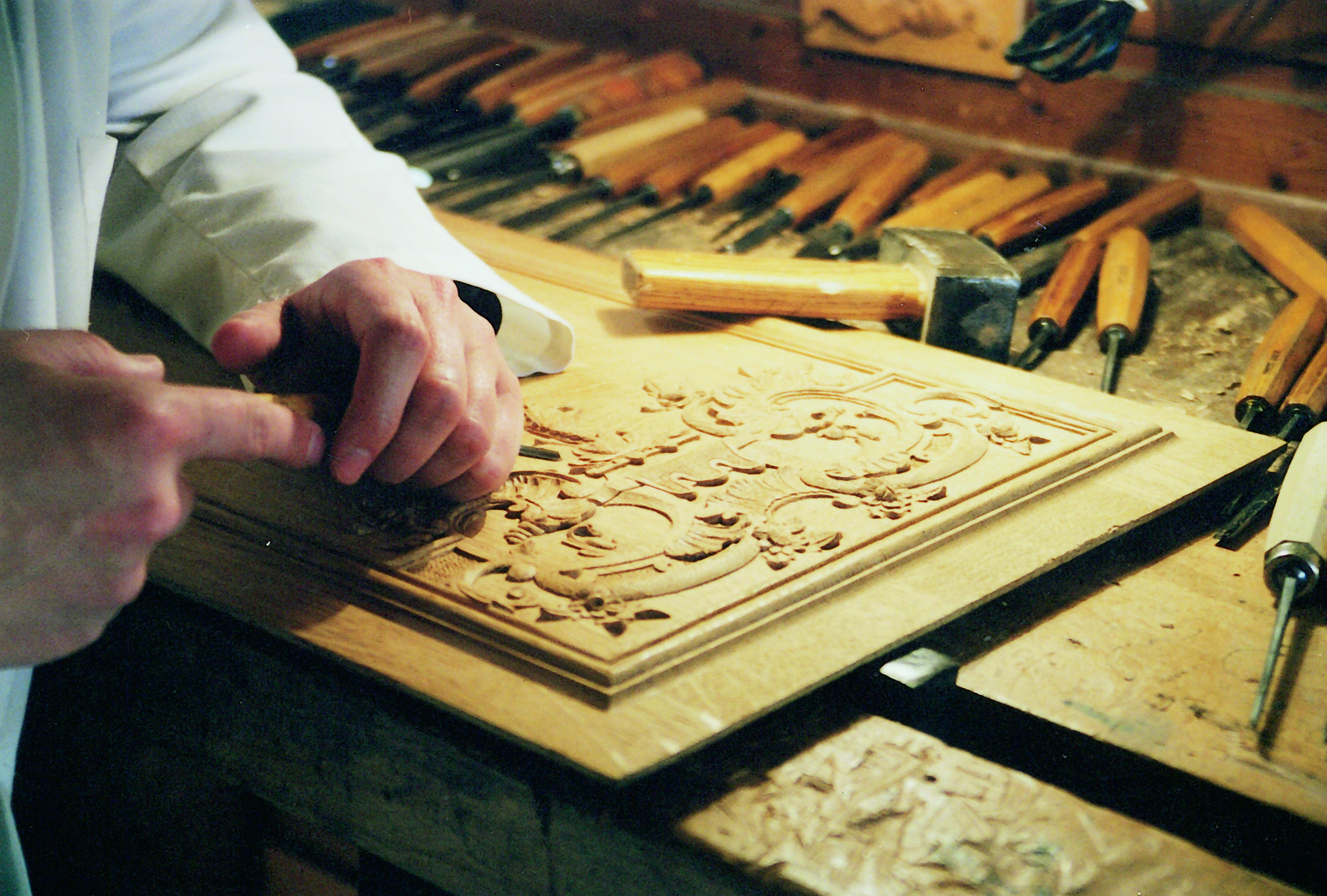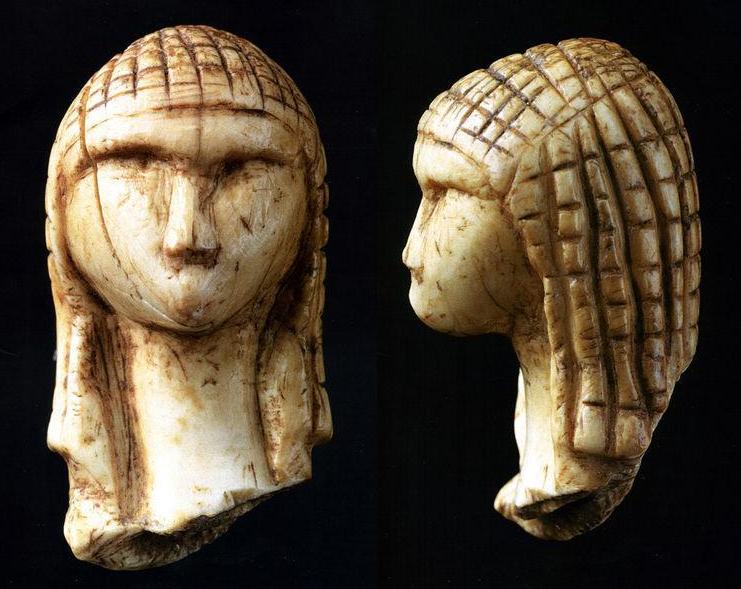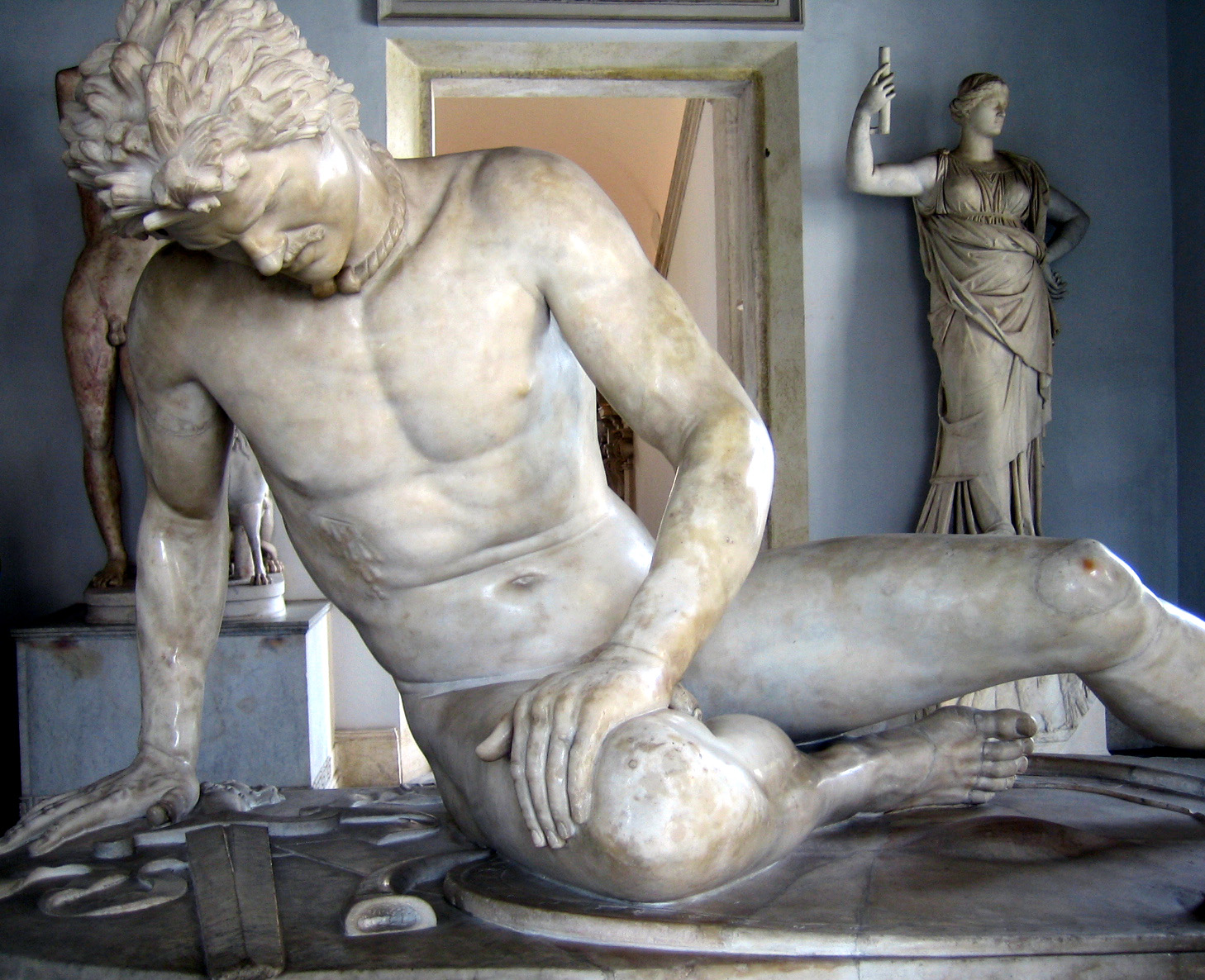|
Carving
Carving is the act of using tools to shape something from a material by scraping away portions of that material. The technique can be applied to any material that is solid enough to hold a form even when pieces have been removed from it, and yet soft enough for portions to be scraped away with available tools. Carving, as a means for making stone or wooden sculpture, is distinct from methods using soft and malleable materials like clay, fruit, and melted glass, which may be shaped into the desired forms while soft and then harden into that form. Carving tends to require much more work than methods using malleable materials.Daniel Marcus Mendelowitz, ''Children Are Artists: An Introduction to Children's Art for Teachers and Parents'' (1953), p. 136. File:Bácsalmás székelykapu.JPG, A carved Székely gate File:Sulykolo.jpg, Székely wood carving Kinds of carving include: * Bone carving * Chip carving * Fruit carving * Gourd carving or gourd art * Hobo nickel * Ice car ... [...More Info...] [...Related Items...] OR: [Wikipedia] [Google] [Baidu] [Amazon] |
Fruit Carving
Fruit carving is the art of carving fruit, a very common technique in Asia and Europe countries, and particularly popular in Thailand, China and Japan. There are many fruits that can be used in this process; the most popular one that artists use are watermelons, apples, strawberries, pineapples, and cantaloupes. History China Many believe that fruit carving originated in China during the Tang Dynasty, which lasted from AD 618-906. Fruit carving in China usually features legendary creatures, and animals. Not only is fruit carving used in cultural and traditional ceremonies, but also ordinary households are known for decorating plates with fruit carvings when they have guests over. Specifically, watermelon carving has been and still is very popular in China. Usually, the outside of the melon is carved on and the melon pulp is scraped out of the inside of the melon, so it can be used as a container to put food or flowers in. Chinese fruit carving is used to tell their legends a ... [...More Info...] [...Related Items...] OR: [Wikipedia] [Google] [Baidu] [Amazon] |
Soap Carving
Soap carving is the artform of carving soap with a variety of tools to create sculptures and images. In the United States, it has its roots in a Procter & Gamble competition from the 1920s. In Thailand, it has artistic roots in local practices of Thai fruit and vegetable carving. Origins During Great Depression era of the 1920s and 1930s, Procter & Gamble held soap carving contests to help advertise their soap, with the National Soap Sculpture Competition in White Soap being announced in 1924. The competition drew in over five hundred submissions across roughly two hundred and fifty applicants. An exhibition of the soap carving sculptures were showcased at the Art Center, New York, from December 1924 to January 1925. First prize brought in a reward of $250 to sculptor Brenda Putnam for a work called "The Vamp". Putnam was quoted by ''The American Magazine of Art'' to have wanted to "lift the soap carving out of the amateur and into the professional field," as she believed it had ... [...More Info...] [...Related Items...] OR: [Wikipedia] [Google] [Baidu] [Amazon] |
Wood Carving
Wood carving (or woodcarving) is a form of woodworking by means of a cutting tool (knife) in one hand or a chisel by two hands or with one hand on a chisel and one hand on a mallet, resulting in a wooden figure or figurine, or in the sculpture, sculptural ornamentation of a wooden object. The phrase may also refer to the finished product, from individual sculptures to hand-worked mouldings composing part of a tracery. The making of sculpture in wood has been History of wood carving, extremely widely practised, but does not survive undamaged as well as the other main materials like Stone sculpture, stone and bronze, as it is vulnerable to decay, insect damage, and fire. Therefore, it forms an important hidden element in the art history of many cultures. Outdoor wood sculptures do not last long in most parts of the world, so it is still unknown how the totem pole tradition developed. Many of the most important sculptures of China and Japan, in particular, are in wood, and so are th ... [...More Info...] [...Related Items...] OR: [Wikipedia] [Google] [Baidu] [Amazon] |
Arborglyph
Arborglyphs, dendroglyphs, silvaglyphs, or modified cultural trees are carvings of shapes and symbols into the bark of living trees. Although most often referring to ancient cultural practices, the term also refers to modern tree-carving. Love carvings Carving names and initials into trees is a common practice among lovers; the carvings can last for decades, as a symbol of the permanence of the couple's love. This practice would appear to date back up to the classical era, with Callimachus writing in his ''Aetia'', "But graven on your bark may ye bear such writing as shall declare 'Cydippe beautiful'" (fragment 73). It also appears in the ''Eclogues'' of Virgil: "Resolved am I in the woods, rather, with wild beasts to couch, and bear my doom, and character my love upon the tender tree-trunks: they will grow, and you, my love, grow with them." This carving was also practised in Renaissance England, as evidenced by the writings of William Shakespeare (in ''As You Like It'', 1599 ... [...More Info...] [...Related Items...] OR: [Wikipedia] [Google] [Baidu] [Amazon] |
Stone Carving
Stone carving is an activity where pieces of rough natural stone are shaped by the controlled removal of stone. Owing to the permanence of the material, stone work has survived which was created during our prehistory or past time. Work carried out by paleolithic societies to create stone tools is more often referred to as knapping. Stone carving that is done to produce lettering is more often referred to as lettering. The process of removing stone from the earth is called mining or quarrying. Stone carving is one of the processes which may be used by an artist when creating a sculpture. The term also refers to the activity of masons in dressing stone blocks for use in architecture, building or civil engineering. It is also a phrase used by archaeologists, historians, and anthropologists to describe the activity involved in making some types of petroglyphs. History The earliest known works of representational art are stone carvings. Often marks carved into rock or petrogly ... [...More Info...] [...Related Items...] OR: [Wikipedia] [Google] [Baidu] [Amazon] |
Ivory Carving
Ivory carving is the carving of ivory, that is to say animal tooth or tusk, generally by using sharp cutting tools, either mechanically or manually. Objects carved in ivory are often called "ivories". Humans have ornamentally carved ivory since prehistoric times, though until the 19th-century opening-up of the interior of Africa, it was usually a rare and expensive material used for small luxury products. Very fine detail can be achieved, and as the material, unlike precious metals, has no bullion value and usually cannot easily be recycled, the survival rate for ivory pieces is much higher than for those in other materials. Ivory carving has a special importance to the medieval art of Europe because of this, and in particular for Byzantine art as so little monumental sculpture was produced or has survived. As the elephant and other ivory-producing species have become endangered, largely because of hunting for ivory, CITES and national legislation in most countries have redu ... [...More Info...] [...Related Items...] OR: [Wikipedia] [Google] [Baidu] [Amazon] |
Vegetable Carving
Vegetable carving is the art of carving vegetables into other objects, such as flowers and birds. The origins of vegetable carving The origins of vegetable carving are disputed: it may have begun in ancient Japan; in Sukothai, Thailand; or in the time of the Tang dynasty (AD 618–906) or Song dynasty (AD 960–1279) in China. Japan Japan may have been the root of the art of fruit and vegetable carving, called Mukimono in Japanese. According to the book ''Japanese Garnishes: The Ancient Art of Mukimono'', by Yukiko and Bob Haydok, Mukimono began in ancient times when food was served on unglazed clay pottery. These rough platters were covered with a leaf before food was plated. Artistic chefs realized that cutting or folding the leaf in different ways created a more attractive presentation. Mukimono did not become popular until the 16th century, the Edo period, when it gained official recognition. At that time, street artists created clever garnishes upon request. From these begi ... [...More Info...] [...Related Items...] OR: [Wikipedia] [Google] [Baidu] [Amazon] |
Sculpture
Sculpture is the branch of the visual arts that operates in three dimensions. Sculpture is the three-dimensional art work which is physically presented in the dimensions of height, width and depth. It is one of the plastic arts. Durable sculptural processes originally used carving (the removal of material) and modelling (the addition of material, as clay), in stone, metal, ceramic art, ceramics, wood and other materials but, since Modernism, there has been almost complete freedom of materials and process. A wide variety of materials may be worked by removal such as carving, assembled by welding or modelling, or Molding (process), moulded or Casting, cast. Sculpture in stone survives far better than works of art in perishable materials, and often represents the majority of the surviving works (other than pottery) from ancient cultures, though conversely traditions of sculpture in wood may have vanished almost entirely. In addition, most ancient sculpture was painted, which h ... [...More Info...] [...Related Items...] OR: [Wikipedia] [Google] [Baidu] [Amazon] |
Petroglyph
A petroglyph is an image created by removing part of a rock surface by incising, picking, carving, or abrading, as a form of rock art. Outside North America, scholars often use terms such as "carving", "engraving", or other descriptions of the technique to refer to such images. Petroglyphs, estimated to be 20,000 years old are classified as protected monuments and have been added to the tentative list of UNESCO's World Heritage Sites. Petroglyphs are found worldwide, and are often associated with prehistoric peoples. The word comes from the Greek prefix , from meaning " stone", and meaning "carve", and was originally coined in French as . In scholarly texts, a ''petroglyph'' is a rock engraving, whereas a '' petrograph'' (or ''pictograph'') is a rock painting. In common usage, the words are sometimes used interchangeably. Both types of image belong to the wider and more general category of rock art or parietal art. Petroforms, or patterns and shapes made by man ... [...More Info...] [...Related Items...] OR: [Wikipedia] [Google] [Baidu] [Amazon] |
Thaeng Yuak
Thai banana stalk carving or ''thaeng yuak'' (''แทงหยวก'', from ''Tang'' meaning "stab" or "carving", and ''Yuak'' mean "Banana stalk") is the Thai local art of carving the banana stalk for temporary decoration in Thai funeral, funerals and cultural events such as religious ceremonies and ordination ceremonies. It is categorized as the ''fresh material carving'' section in the main 10 Thai art skills (''ช่างสิบหมู่'') although the population of ''thaeng yuak'' artists is very low compared to other art skills sections. ''Thaeng yuak'' is a carving art that was popular in the lower part of central Thailand such as Phetchaburi and Ayutthaya Province, Ayutthaya province but most information about ''thaeng yuak'' art has been saved in Phetchaburi community more than it has been in other provinces. The main purpose of Banana Stalk Carving is to decorate the bier and funeral area. Also, ''thaeng yuak'' is made by the very skillful artists and the people ... [...More Info...] [...Related Items...] OR: [Wikipedia] [Google] [Baidu] [Amazon] |
Hobo Nickel
The hobo nickel is a sculptural art form involving the creative modification of small-denomination coins, resulting in miniature bas reliefs. The United States nickel coin was favored because of its size, thickness, and softness; but the term ''hobo nickel'' is generic, carvings having been made from many denominations. Because of its low cost and its portability, this medium was particularly popular among hobos, hence the name. Early altered coins (1750s–1913) The altering of coins dates from the 18th century or earlier. Beginning in the 1850s, the most common form of coin alteration was the "potty coin", engraved on United States Seated Liberty coinage (half dime through trade dollar) and modifying Liberty into a figure sitting on a chamber pot. This period was also the heyday of the love token, which was made by machine-smoothing a coin (usually a silver one, such as a Morgan dollar) on one or both sides, then engraving it with initials, monograms, names, scenes, etc., ... [...More Info...] [...Related Items...] OR: [Wikipedia] [Google] [Baidu] [Amazon] |










